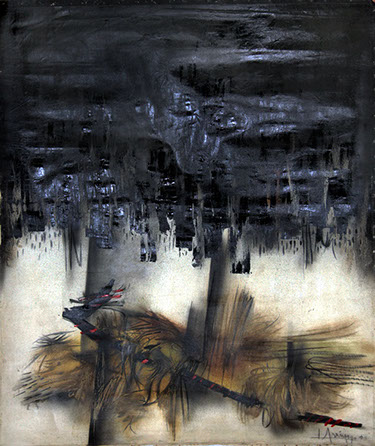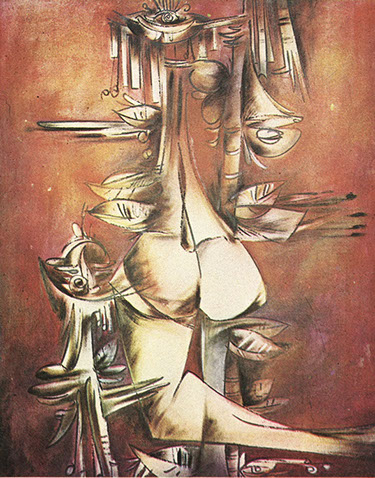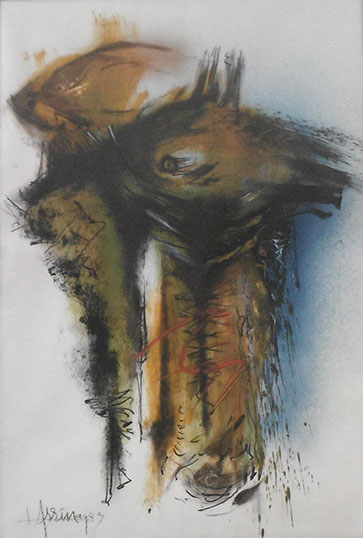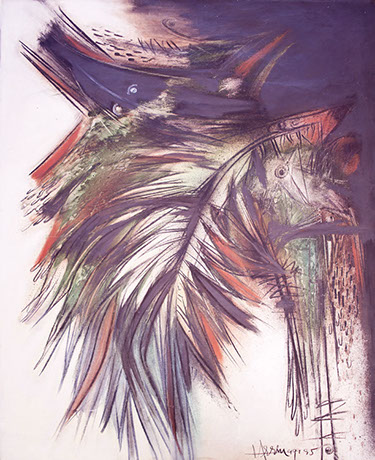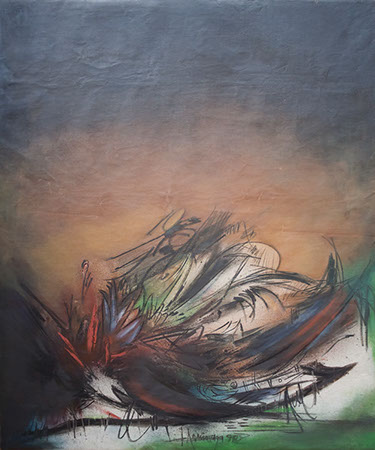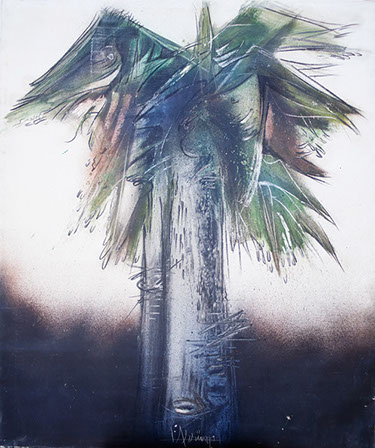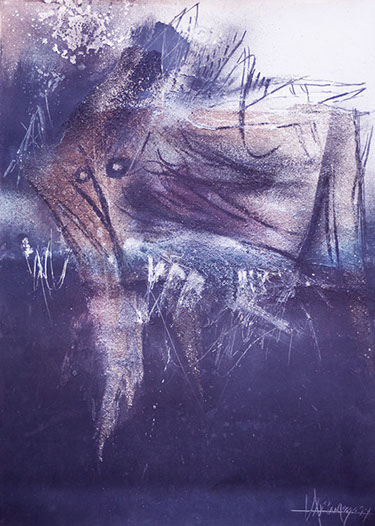ARNALDO RODRIGUEZ LARRINAGA
“... I entered the world of flora and fauna. Along that path my experiences came forth, the neighborhoods where I lived: Atarés, Los Sitios, Lawton, life in the slum, the language, the rumbas de cajón. My conversations with Rogelio Martínez Furé also helped a lot, as well as reading Fernando Ortiz and Argeliers León. And the teachings of the masters of Cuban painting were very important. ”
Arnaldo Rodríguez Larrinaga, 1980
“Wifredo Lam is my spiritual father—the man who made me change paths right and left, who led me to undo everything that was tying me down, who with his sharp, poking elements, with arrows and lines, was able to make the arrow hit the point where it made me react to see the pictorial universe.”
Arnaldo Rodríguez Larrinaga, 1998
... one of the most renowned Cuban painters today... with an impressive interior world and an idiom that begins with his own identity and goes on to achieve universality.
ABC, Madrid, 2002
His early painting is neither black-focused nor Afro-Cuban, but just Cuban. And it is Cuban, following Ortiz’s thesis, by doing and not by nature, two categories Ortiz lucidly explains in his book El engaño de las razas. The African elements, to give them some sort of name, that can be seen mostly in the shapes in Larrinaga’s work, are the result of a “mental coexistence” with those elements.
(...) Larrinaga abstracts shapes, suppresses, essentializes, without being abstract. In his paintings the visual mysteries of the Antillean environment slowly shift to one side or leap away like gestural escapes that make the painter a sort of Calibanesque expressionist—nothing Cartesian about it.
Juan Sánchez, 1998
“... penetré en el mundo de la flora y la fauna. Por este camino fueron aflorando mis vivencias, los barrios donde viví: Atarés, Los Sitios, Lawton, la vida del solar, el lenguaje, las rumbas de cajón. Luego, me ayudaron las conversaciones con Rogelio Martínez Furé, las lecturas de Fernando Ortiz y Argeliers León y, algo muy importante, las enseñanzas de los maestros de la pintura cubana.”
“Wifredo Lam es mi padre espiritual. El hombre que me hizo desandar caminos a diestro y siniestro, que me hizo desatarme de todo amarre, que con sus elementos agudos y punzantes, con sus flechas y sus líneas, supo clavar la flecha en el punto donde me hizo reaccionar para ver el universo pictórico.”
Arnaldo Rodríguez Larrinaga, 1998
...uno de los más renombrados pintores cubanos contemporáneos... con un impresionante mundo interior y un lenguaje que parte de la identidad propia para alcanzar la universalidad.
diario ABC, Madrid, 2002
Su primera pintura ⎯ni negrista, ni afrocubana⎯ es únicamente cubana. Y lo es ⎯según la tesis de Ortiz⎯ por hechura y no por natura, dos categorías explicadas con cabal lucidez en su libro El engaño de las razas. Los elementos afroides, por aludirlos de alguna manera, que se aprecian más que nada en lo formal en la obra de Larrinaga, son el resultado de una “convivencia mental” con esos elementos.
(...) Larrinaga abstrae formas, suprime, esencializa, sin ser abstracto. En sus cuadros los misterios visuales del ámbito antillano se desplazan lentos o dan saltos como fugas gestuales que tornan al pintor en una especie de expresionista calibanesco, nada cartesiano.
Juan Sánchez, 1998
